#1 #2 #3 #4 #5 #6 #7
I arrive in Querétaro for the fourth stop of my traveling residency with the Alliance Française. From April 23 to May 2, 2019, I am working with the Regional Museum of Querétaro and the anthropologists of the INAH Querétaro center team who link with three communities of Otomís craftsmen.
In the first few days, I visit workshops and houses of textile craftsmen in otomís villages of the region: in Santiago Mexquititlán, San Ildefonso Tultepec, and San Miguel Tolimán. The productions of each village are distinguished in color, patterns, objects, and raw materials: embroidery, clothes, dolls, towels, ... Beyond the specificities that appear in each creation, some questions and issues overlap for these craftsmen: how to find a good point of sale where buyers will value their manual work, their traditional techniques, and their time? How to protect one’s creations from a copy? How to distinguish personal creations from those of the group (craft people from the same village) without losing the important sense of community? What actions are possible to enhance and “save” the disappearing craft techniques?
The daily life and cosmogony of these communities was such an inspiration. The relationship that the otomís have with the mountain (cerro) and the custom of making crosses (cruzes de ánimo) in chapels family particularly caught my attention. The crosses are the proof of very strong bonds maintained with the ancestors and are present in temples, in people's chapels, in their houses, in the mountains ... In every conversation, the memory of the ancients is mentioned. In these sacred objects, Catholic beliefs interweave with otomíes ones. We find similar patterns of interbreeding on textiles, and the figure of the mountain in the embroidery, in the architecture or other details of everyday life.
Part of an intangible heritage still alive in the region, these elements bear witness of a privileged relationship with nature. Between admiration and necessity, the communities feel love and respect for their land and those who inhabited before them.
Another recurring sign that marked me is the one evoking mobility and migration of these communities. Indeed, these movements are visible under multiple forms. The daily (or longer) round trips to go selling their creations “to the city” involves, for example, transporting their material: How much material is it? How do they transport it? What are the factors that identify these groups compared to other communities also present in these movements? How do they manage to open new branches of their community in other places? In these three communities, I have nevertheless noted that this movement, if it is dispersed, always returned to its center and origin during festivals' annual patronage. There, each member of the community, more or less distant geographically, returns to the village for the holidays. The themes of movement, of walking, of men and women charging artifacts, of migration, and identity are as contemporary issues as nomadic traditions.
It is from these different signs read in the landscape and in these meetings that I based this textile work in co-creation. With each community, we explored the identity of the group based on the textile techniques practiced, on the colors and clothes worn, and on traditions and stories told. After research of composition showing these signs (cross, arrows, nature, mountain), I plan a three-day-workshop with craftspeople from these three communities. We have thus worked to produce banners in the colors of their groups highlighting their textile techniques. Like a flag to plant in the decor to signify a colorful presence or to defend a group identity.



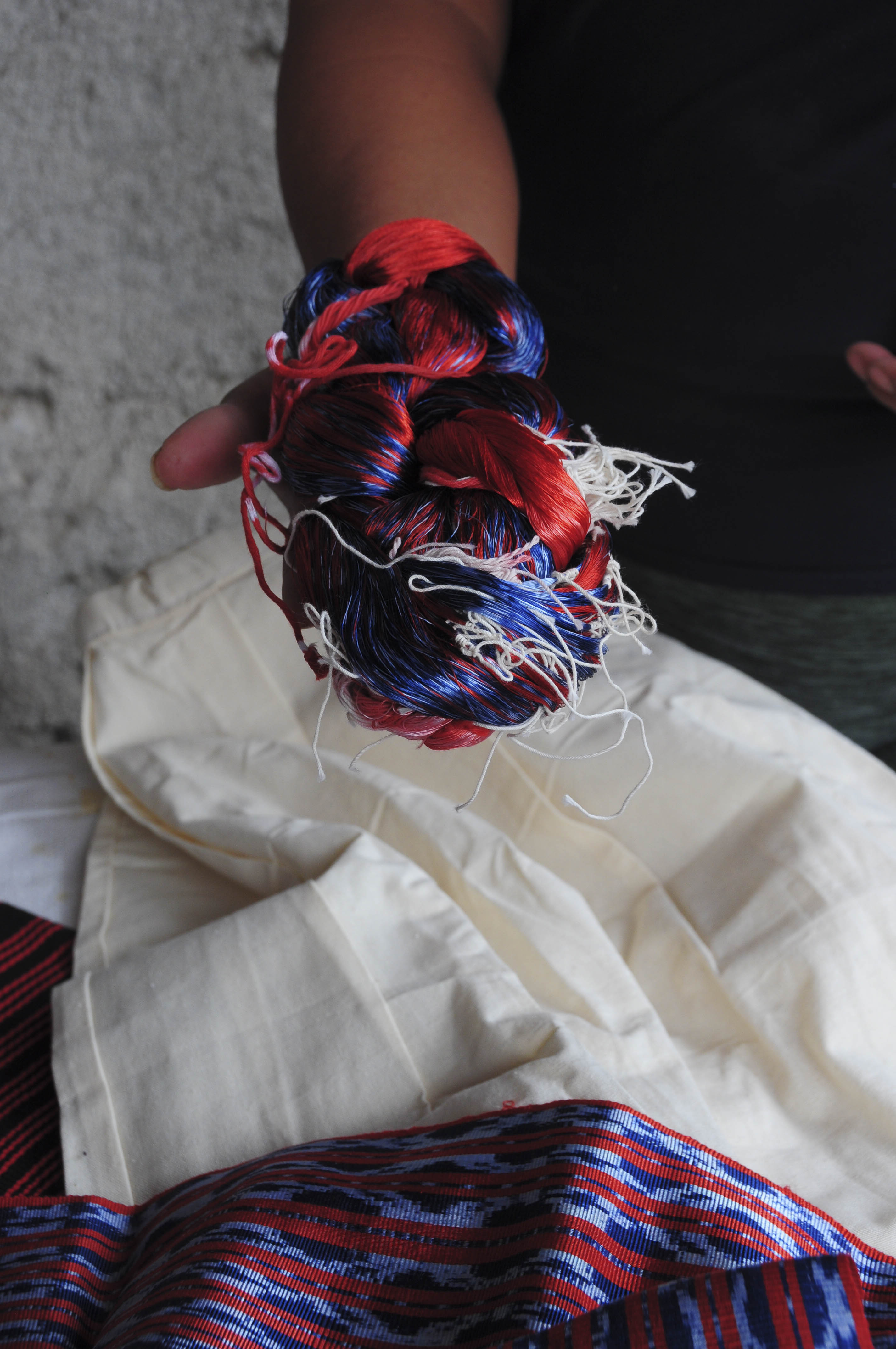




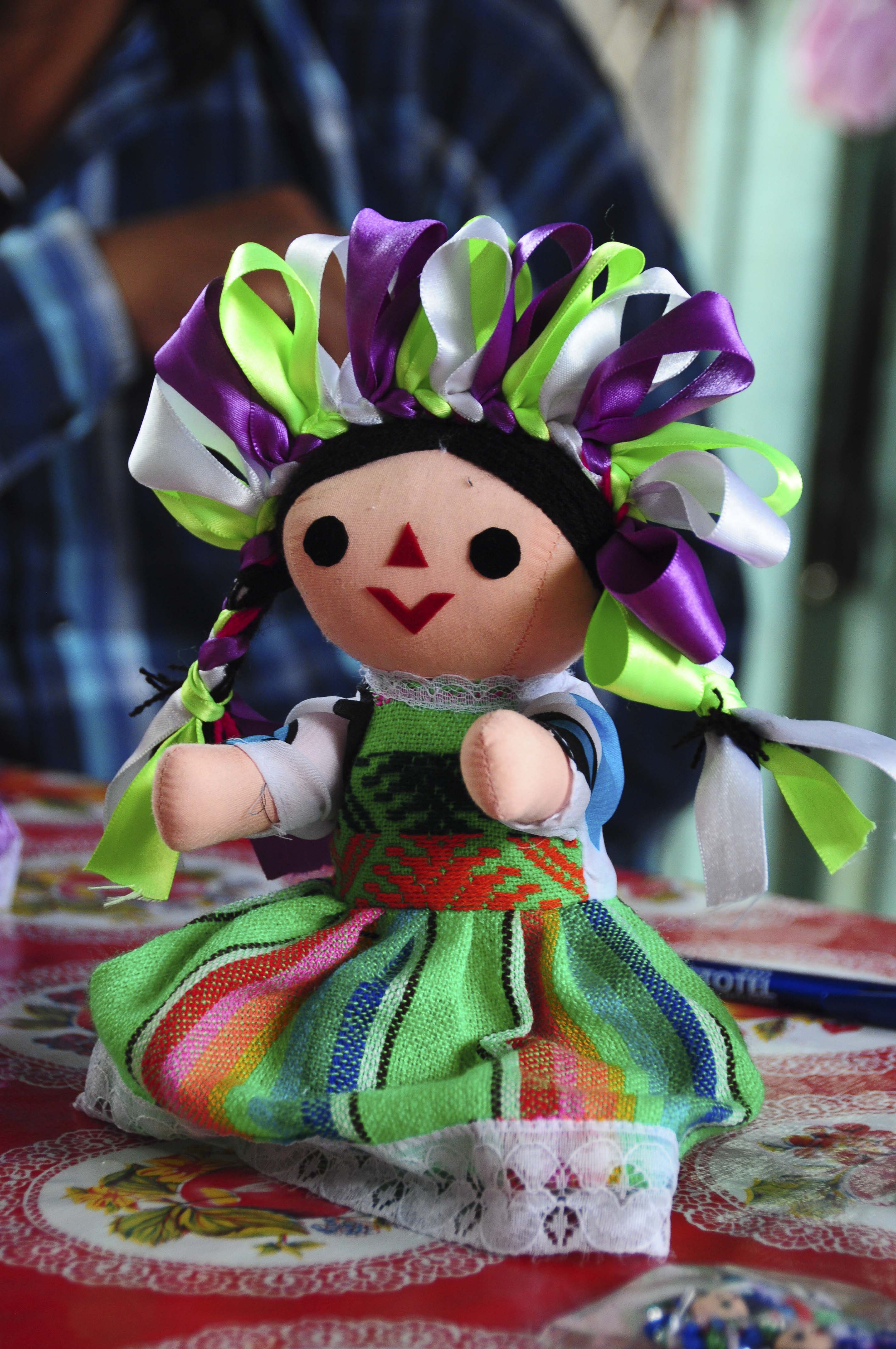

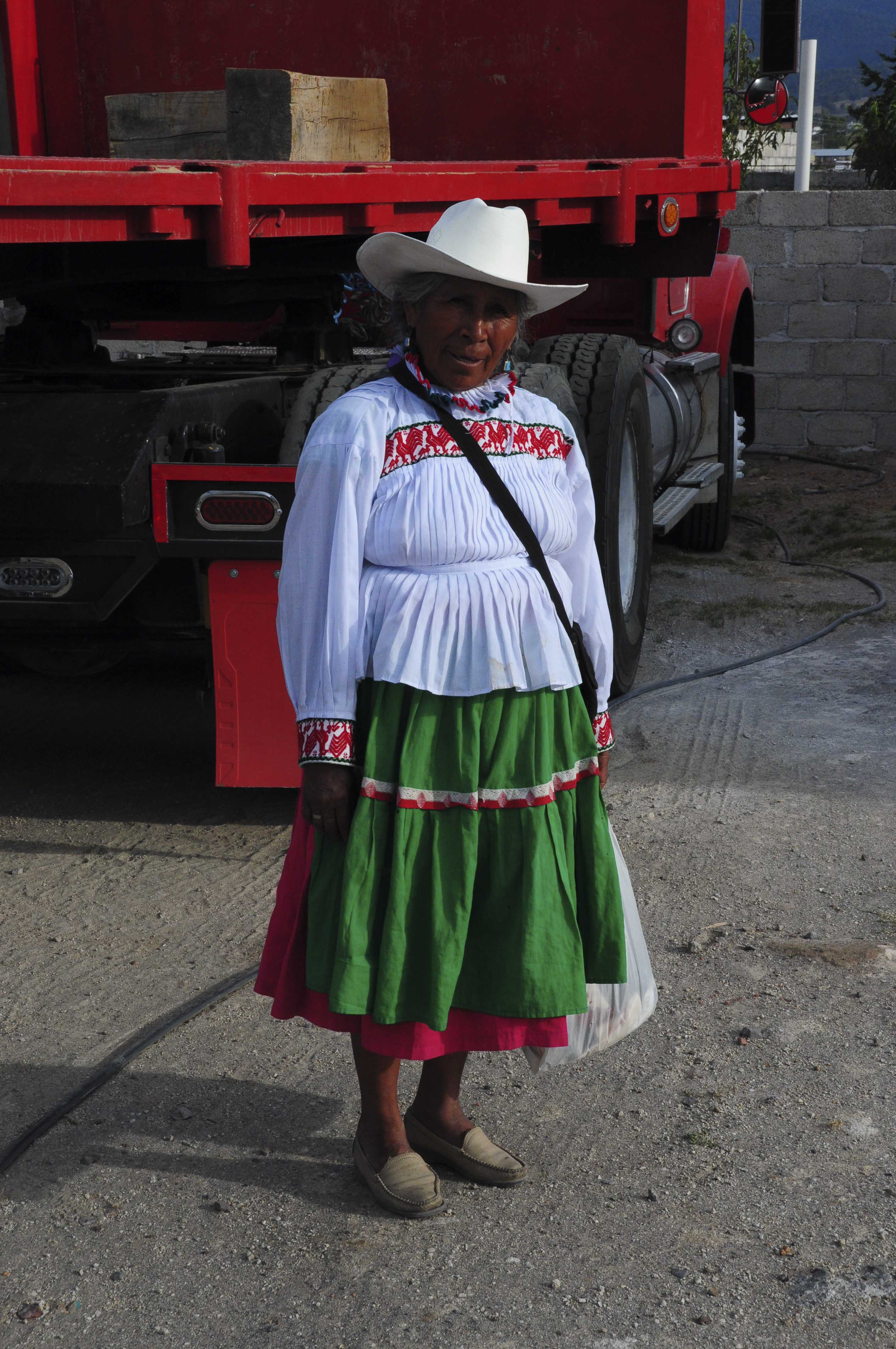










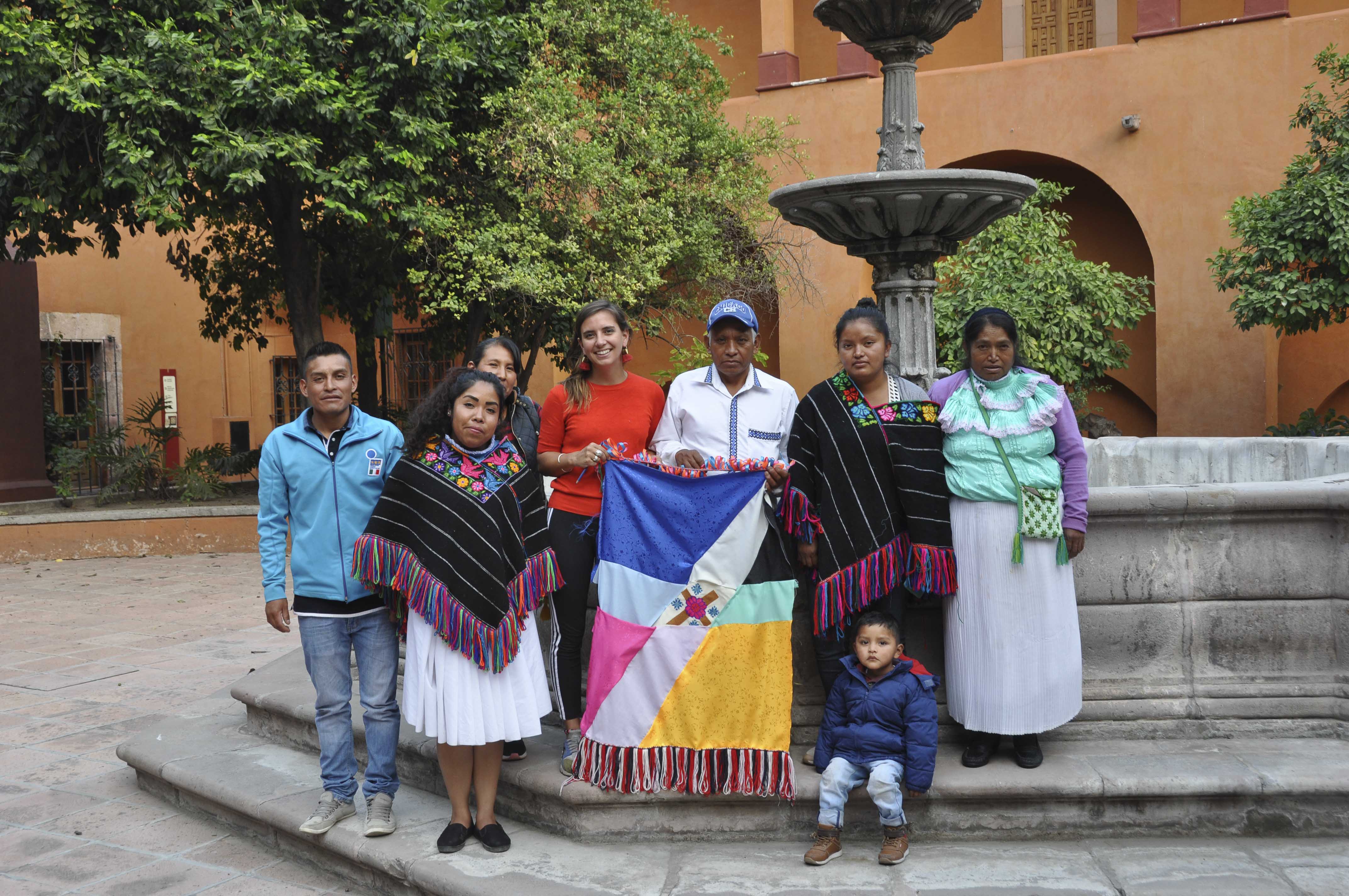
Digital photographs. Research notebooks a,d sketches. Visits and co-creation workshops.
• IDENTITADES
(identities)
Exhibition presented from May 2 to June 2, 2019 at Regional Museum of Querétaro

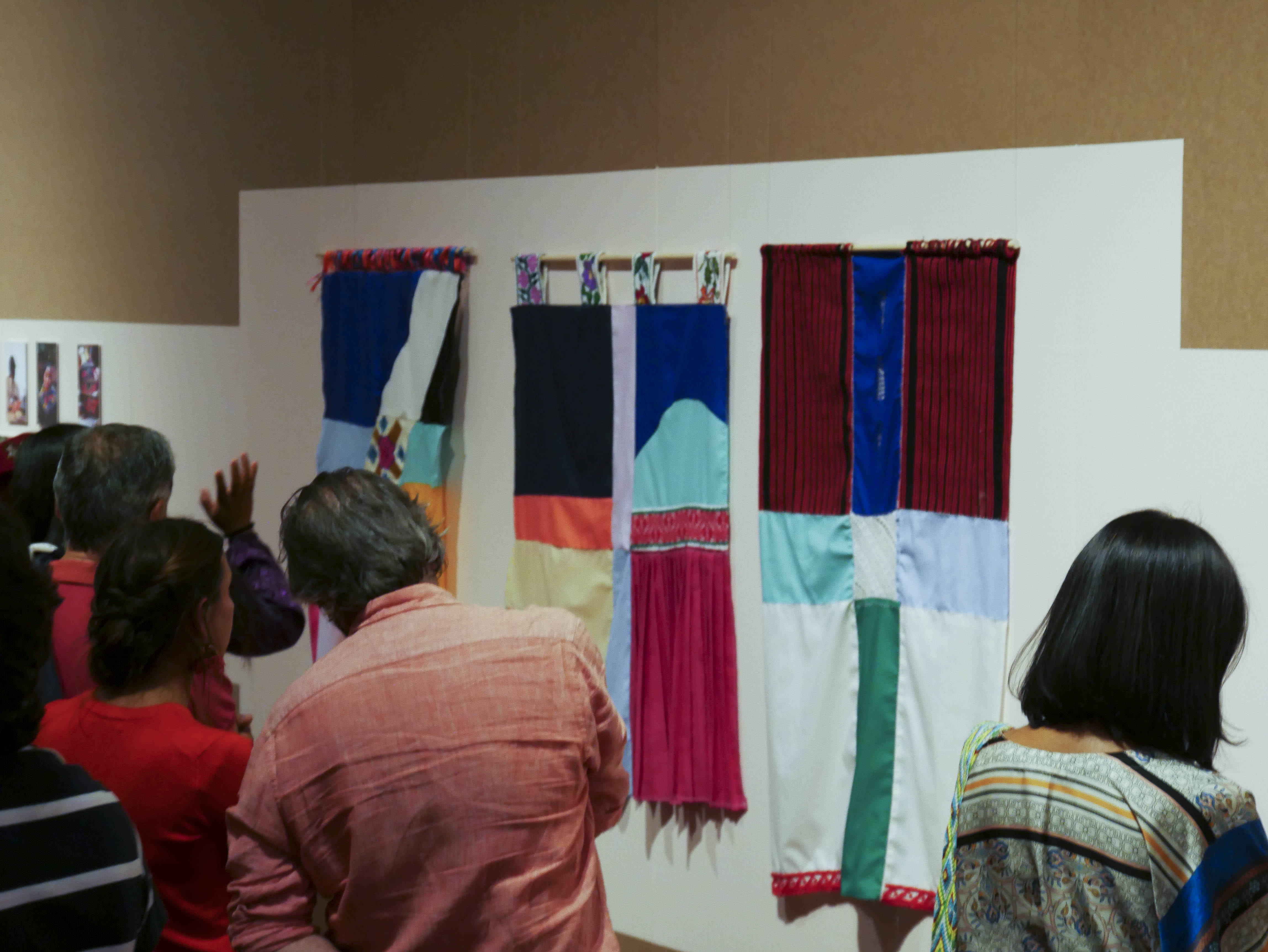







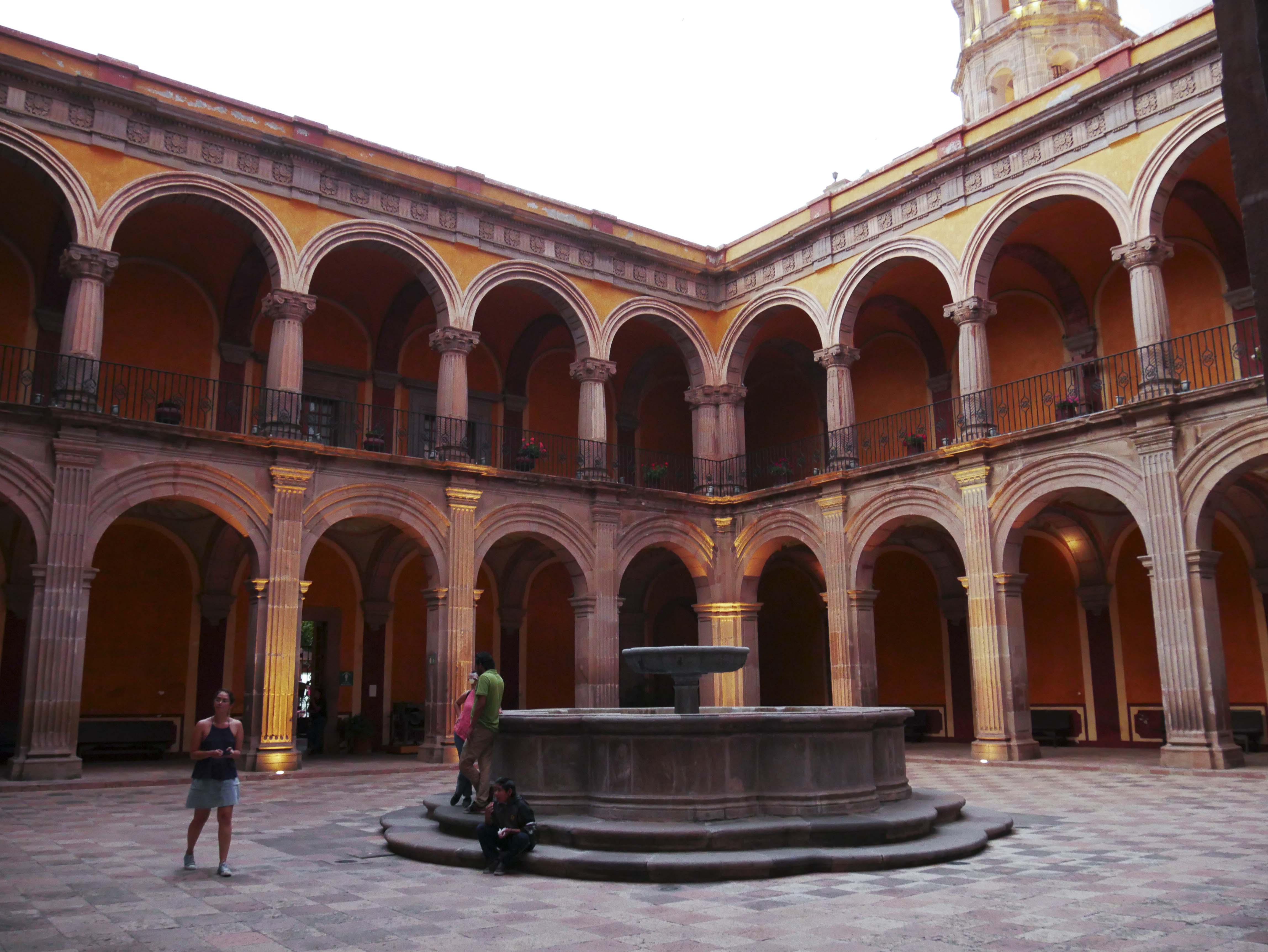

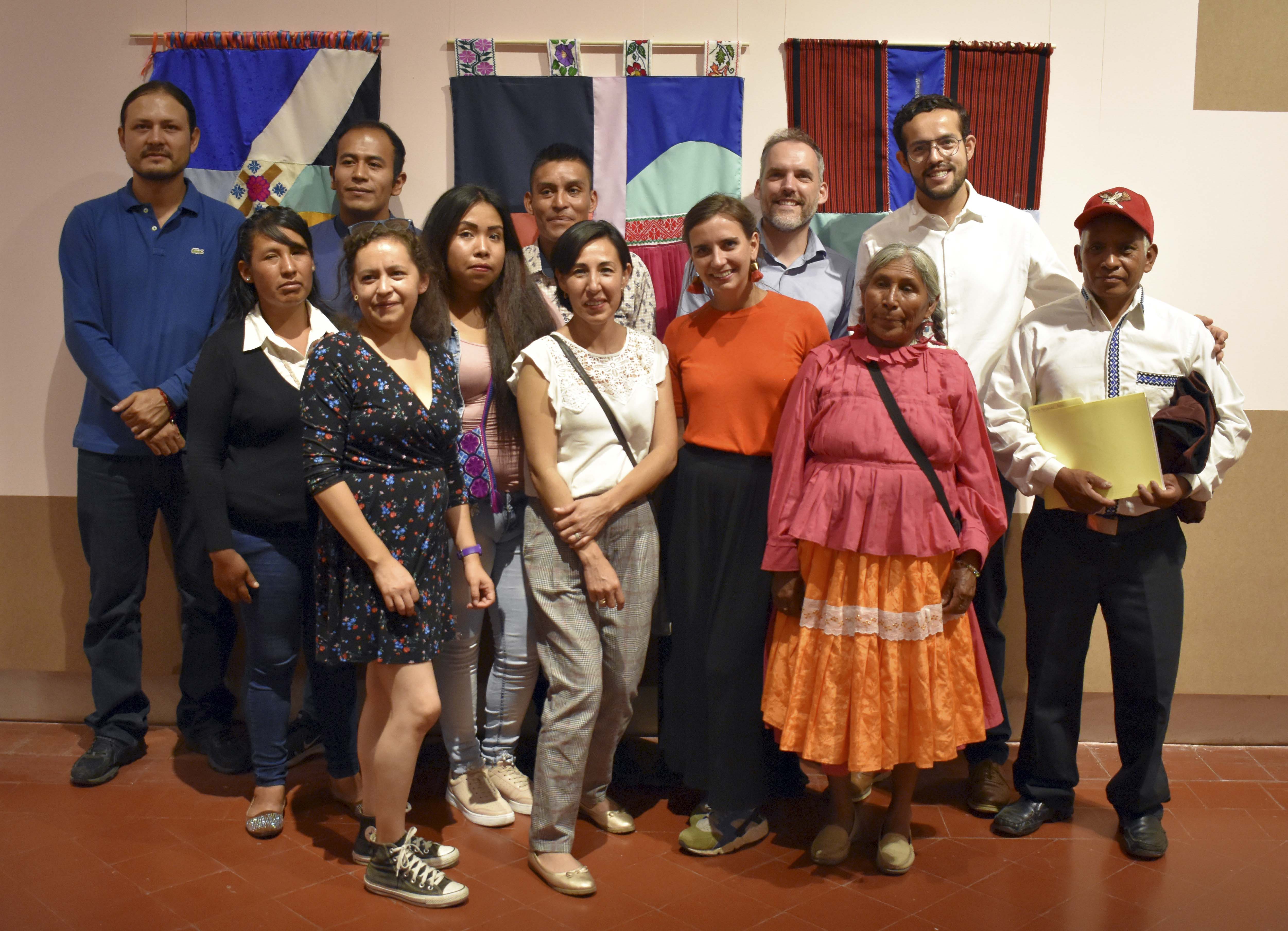

3 flags made with the fabric used to make the community costumes, embrodery, “deshilado”, “burgalesa”, hand-woven fabric made on backstrap loom, “randa”, braids, pleats, and franges. Photos and sketches.
Co-creators :
SAN ILDEFONSO : Lucia Morales, Gudelia Morales Doroteo, Macedonia Blas Flores,
SANTIAGO MEXQUITITLAN Nicolasa Cruz Linares, Rocío Hernández Agustín, Fidencio Fernández Peña, María del Carmen Robles Martínez, Loidavitia Fernández Robles, Minca Fernández Robles, Jaime Hernández Juárez, Celestino Paulino Guillermo
SAN MIGUEL TOLIMAN : María Luisa y Teresa de Santiago Peñablanca + Thanks to Edith, Ricardo, Ernesto, Tony, Ramon, Adrian, Yann, Aurélie, Murielle, Kevin, Manon and the craft people. Photo credits : Garance Maurer and Kévin Theze.
Explore the different steps :
︎ introduction and final restitution
︎ TENANGO DEL VALLE #1
︎ SAN CRISTOBAL DE LAS CASAS #2
︎ MERIDA #3
︎ QUERETARO #4
︎ SAN LUIS POTOSI #5
︎ SALTILLO #6
︎ CIUDAD DE MEXICO #7
